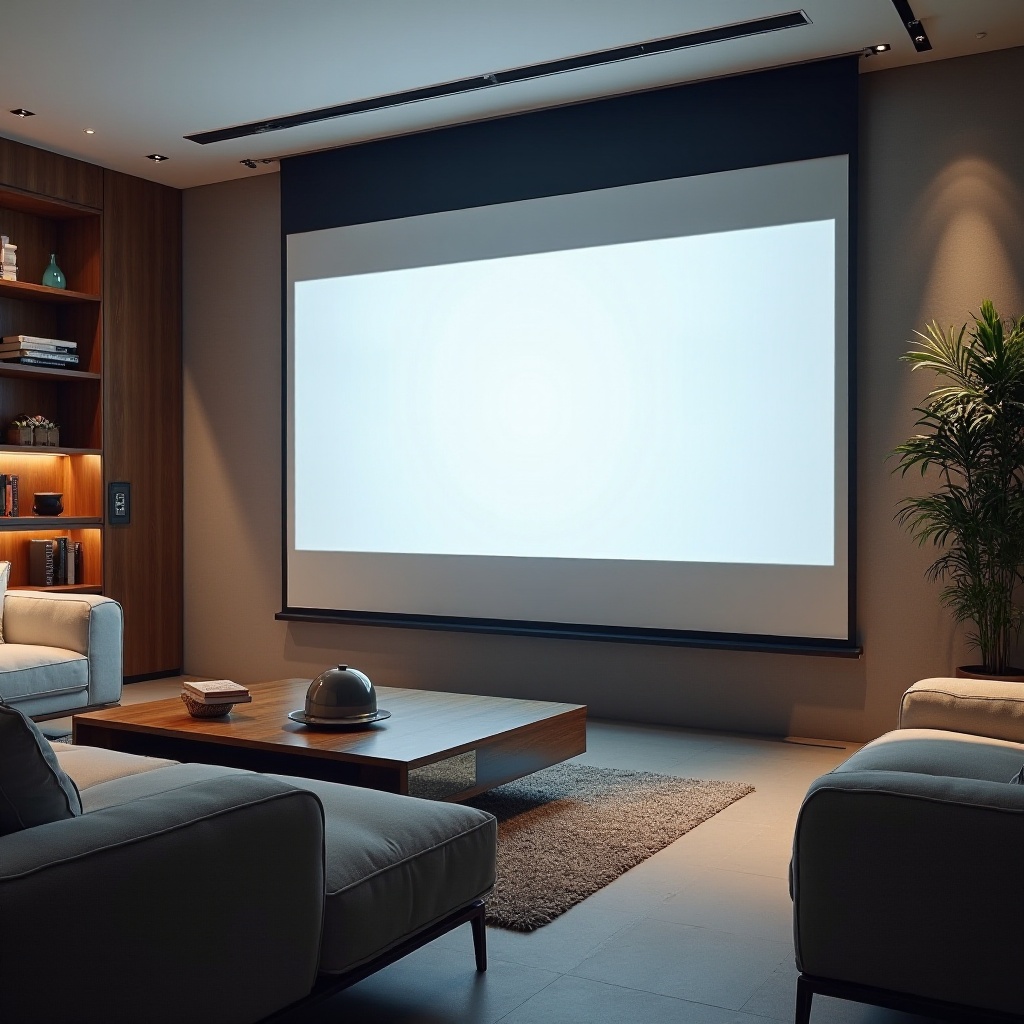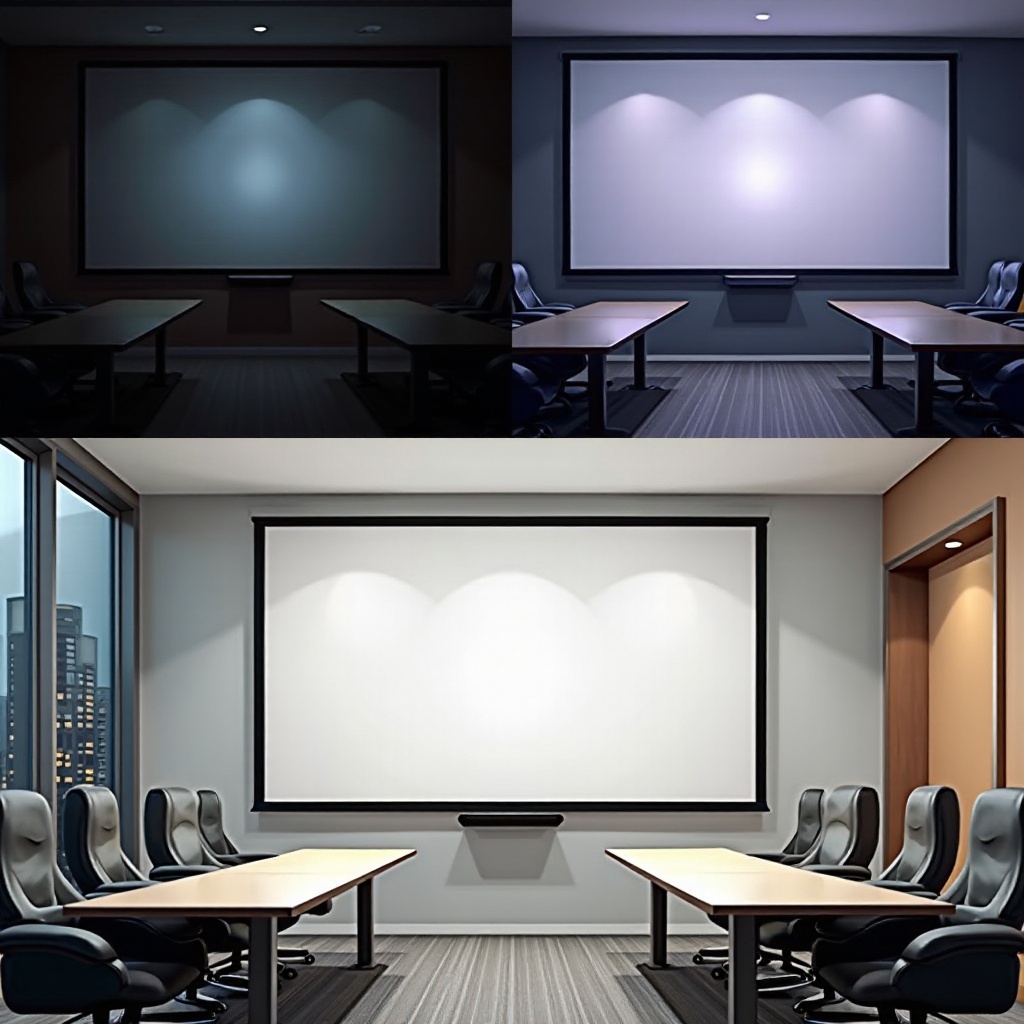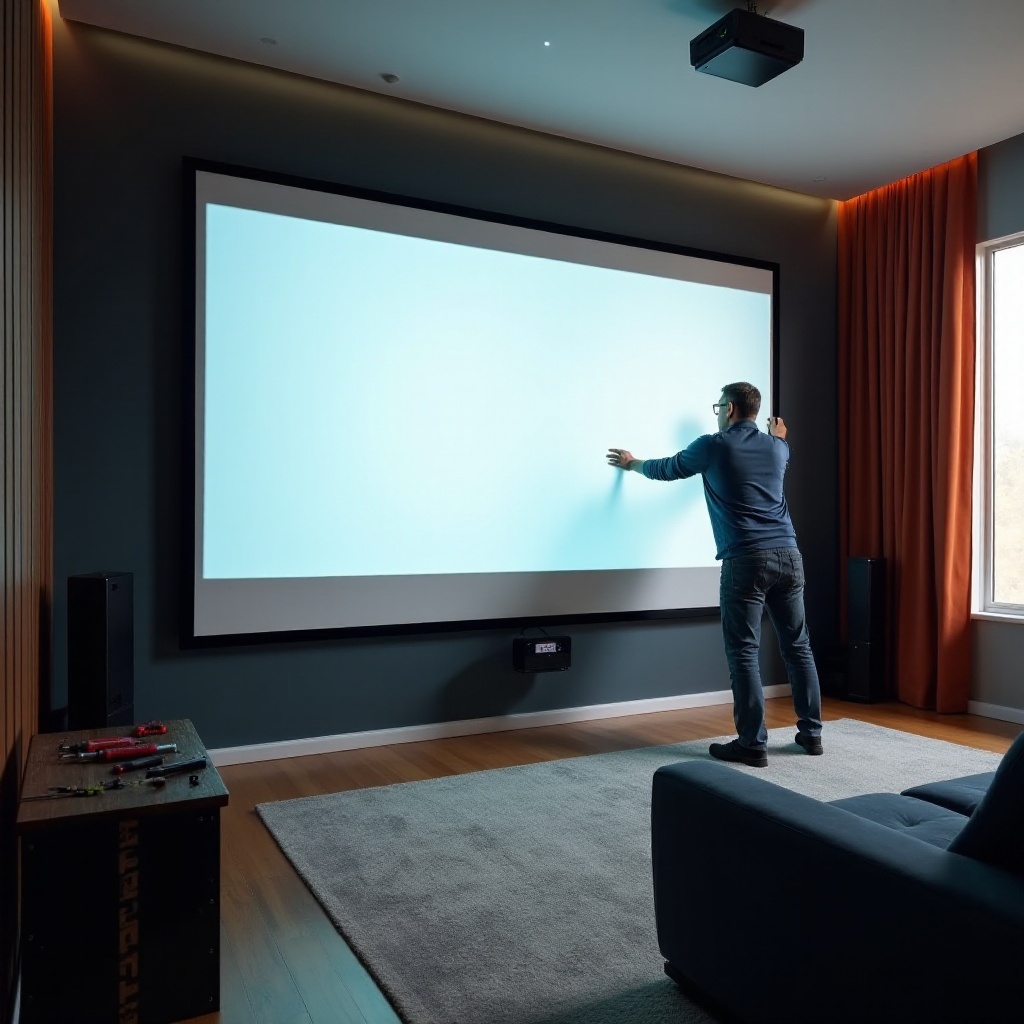Introduction
Selecting the best material for your projection screen can significantly enhance your viewing experience, providing sharper images and optimal color contrast. Whether setting up a home theater, office presentation area, or outdoor projection space, the right material can make all the difference. This comprehensive guide will cover key factors to consider, help you understand different types of materials, weigh their pros and cons, and offer recommendations for various environments.

Key Factors to Consider When Choosing Projection Screen Material
When choosing the best material for projection screens, several factors must be considered to ensure optimal performance:
- Viewing Environment: The brightness and size of your room play a crucial role. Ambient light, screen size, and projector type can affect the material you choose.
- Gain: This refers to the reflectivity of the screen material. Higher gain means a brighter image, while lower gain can provide better color accuracy and viewing angles.
- Resolution and Contrast: High-definition content and projectors with high lumens should pair with materials that amplify these features.
- Durability and Maintenance: Consider how easy it is to clean and maintain the screen. Some materials are more prone to damage and may require delicate handling.
Understanding these factors will help you make an informed decision when selecting the appropriate projection screen material for your needs.
Types of Projection Screen Materials
There are various projection screen materials available, each with distinctive features suited for different environments and preferences. Here’s a closer look at the popular options:
Matte White
Matte white screens are the most commonly used due to their versatility. They offer a neutral color balance and even distribution of light, which enhances image clarity. Ideal for standard room brightness and various projector types, they are a popular choice for both home and professional use.
Gray Screens
Gray screens, or high-contrast screens, are designed to improve contrast levels in rooms with moderate ambient light. They help to maintain darker black levels, providing better performance in environments where controlling light is challenging.
Glass Beaded Screens
Glass beaded screens boost brightness by reflecting light through tiny glass beads embedded in the material. This reflective quality makes them suitable for environments where light control isn’t optimal, although they can suffer from angular reflectivity issues.
Silver Screens
Often used in 3D projection, silver screens have a high reflectivity that enhances brightness and supports polarized light, which is crucial for 3D systems. They also maintain high image contrast and sharpness, though they might present hot spots or glare if not positioned correctly.
Ambient Light Rejecting (ALR) Screens
ALR screens are designed to reject ambient light, making them excellent for bright rooms. They work by reflecting light directly back towards the projector while absorbing off-axis ambient light, ensuring the image stays clear even in well-lit environments.
Advantages and Disadvantages of Each Material
Each projection screen material comes with its unique set of pros and cons. Let’s delve into the specifics:
Pros and Cons of Matte White
Pros:
– Versatility in use with different projectors and environments
– Neutral color balance provides accurate color reproduction
– Wide viewing angle
Cons:
– Lower contrast in brightly lit rooms
– May not perform optimally with high-lumen projectors
Pros and Cons of Gray Screens
Pros:
– Improved contrast in moderate ambient light
– Better black levels and shadow detail
– Suitable for rooms where full light control is difficult
Cons:
– Reduced brightness compared to white screens
– Narrower viewing angles
Advantages and Drawbacks of Glass Beaded Screens
Advantages:
– Enhanced brightness due to reflective glass beads
– Suitable for rooms with higher ambient light
Drawbacks:
– Narrow viewing angles
– Potential for visible texture, reducing image quality
Benefits and Downsides of Silver Screens
Benefits:
– Exceptional for 3D projection due to high reflectivity
– Better image brightness and contrast
Downsides:
– Higher tendency for hot spots and glare
– Positioning needs to be precise for optimal performance
Why Choose (or Avoid) ALR Screens
Why Choose:
– Best for bright rooms with high ambient light
– Excellent contrast and image clarity
– Effective in rejecting excess light
Why Avoid:
– Generally more expensive than other materials
– Limited to high-quality projectors for best results
Recommendations for Different Environments
Now that we have reviewed the different materials and their attributes, let’s explore which ones are best suited for various environments.
Home Theater Best Choices
For home theaters, where you can usually control the ambient light, matte white or gray screens are highly recommended. These provide excellent color reproduction, high contrast, and enhance the cinematic experience. Home theaters benefit from these materials because they support a wide range of projector qualities and ensure an immersive viewing experience.
Office and Classroom Recommendations
In spaces such as offices and classrooms, where ambient light control is often limited, glass beaded screens and ALR screens work best. Their reflective and light-rejecting properties ensure the image remains bright and clear. These types of screens help in maintaining the visibility of presentations or instructional materials, regardless of the lighting conditions.
Outdoor Projection Options
For outdoor projection, where maximum brightness and durability are essential, silver screens and glass beaded screens are suitable. These materials handle higher ambient light well and provide robust performance. The strength and resilience of these screens make them ideal for outdoor conditions, where they can withstand varying weather elements while still delivering a high-quality image.

Installation and Maintenance Tips
To ensure longevity and optimal performance of your projection screen:
-
Installation: Follow manufacturer instructions carefully for the correct mounting for the best image quality and screen stability. Use supporting brackets and ensure there are no wrinkles. Proper installation will prevent drooping or distortion, maintaining a sharp and clear projection.
-
Maintenance: Clean your screen gently with a soft cloth and mild soapy water. Avoid abrasive materials to prevent scratching the surface. Regularly inspect for dust and debris. Keeping your screen clean ensures a clear image and extends the life of the material.

Conclusion
Choosing the best material for your projection screen can significantly impact your viewing experience. By considering your environment and projector type, you can select the ideal material to enjoy sharp, vibrant images. Proper knowledge and selection of the right screen material will greatly enhance the quality of your projections, ensuring a satisfying and immersive experience.
Frequently Asked Questions
What is the best material for a home theater projection screen?
For home theaters, matte white or gray screens are recommended due to their versatility and ability to enhance color and contrast.
How do I clean and maintain a projection screen?
Use a soft cloth with mild soapy water and gently wipe the screen. Avoid using abrasive materials to maintain its quality.
Can I use a DIY solution for my projection screen material?
Yes, DIY solutions like specialized paints can be used, but professionally made screens will generally provide better quality and longevity.
